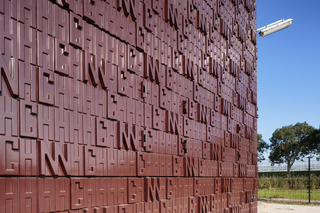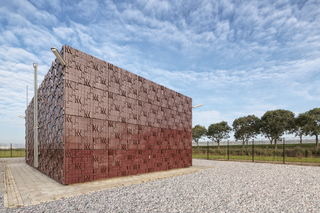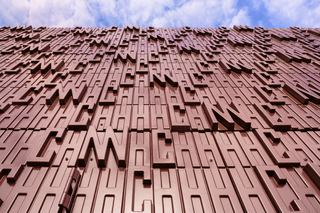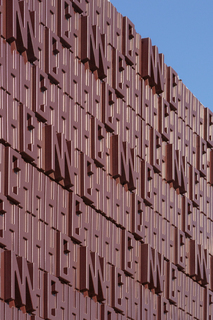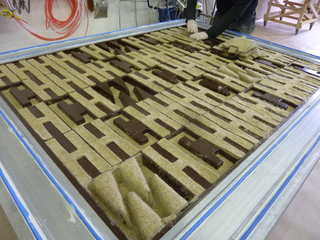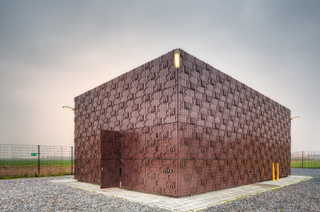
Dinteloord Gas Receiving Station
noordzeedijk dinteloord
The facade of the new gas receiving station of the Agro Food Cluster (AFC) New Prinsenland is built with biobased panels of Nabasco material, produced by NPSP Composites in Haarlem. The 104 panels in total consist of a composite material of bio resin and hemp fibers. No dyes are added during the production of biocomposite. The material therefore has the color of the raw material: chocolate brown.
The world's first biobased façade is in Dinteloor
Dinteloord Gas Receiving Station
The New Prinsenland Agro & Food Cluster is a large-scale project location for greenhouse horticulture and business activities east of Dinteloord. The area, with an existing factory site of the Suikerunie, is approximately 600 hectares. The AFC Nieuw Prinsenland will become an example of sustainable links in which cycles in the field of energy, water and residual flows are closed as much as possible. For example, the greenhouse horticulture area will be able to use the residual heat and CO2 that is available at the Suiker Unie factory. In addition, the irrigation water basins are constructed with beet soil that remains in the sugar production process. There will be a bio-fermentation plant, with which vegetable waste can be converted into biogas, and in the horticultural greenhouses, CHPs will produce additional heat, electricity and CO2. Together, these CHPs will be able to supply around 200 MW of electricity to the grid, which is equivalent to half a coal-fired power station. For the time being these CHPs will be fed with natural gas, but that will be mixed in the future and possibly completely replaced by biogas.
At the center of this progressive area is the new Gas Receiving Station, a rectangular building with a pop-up roof. And a skin of biocomposite.
When it comes to the processing of residual flows, Suiker Unie takes the lead: the factory wants to use sugar beet residues for new raw materials. That transition to a "biobased economy" as it took shape at various levels in AFC was the reason for architect Marco Vermeulen to investigate how this could be anticipated in the materialization of the gas receiving station. Together with NPSP from Haarlem, he has developed a facade panel with a recipe of organic resin and hemp fibers. The panel represents the chemical composition of natural gas in relief in the correct ratio of hydrogen (H), carbon (C) and nitrogen (N). The use of fossil fuels in the CIS is thus combined with a promise of an era with biobased raw materials.
When it comes to the processing of residual flows, Suiker Unie takes the lead: the factory wants to use sugar beet residues for new raw materials. That transition to a "biobased economy" as it took shape at various levels in AFC was the reason for architect Marco Vermeulen to investigate how this could be anticipated in the materialization of the gas receiving station. Together with NPSP from Haarlem, he has developed a facade panel with a recipe of organic resin and hemp fibers. The panel represents the chemical composition of natural gas in relief in the correct ratio of hydrogen (H), carbon (C) and nitrogen (N). The use of fossil fuels in the CIS is thus combined with a promise of an era with biobased raw materials.
year
2012
in cooperation with
Gasunie
programme
Gas receiving station
2012
in cooperation with
Gasunie
programme
Gas receiving station
next project:
Trenches for Peace
related projects

